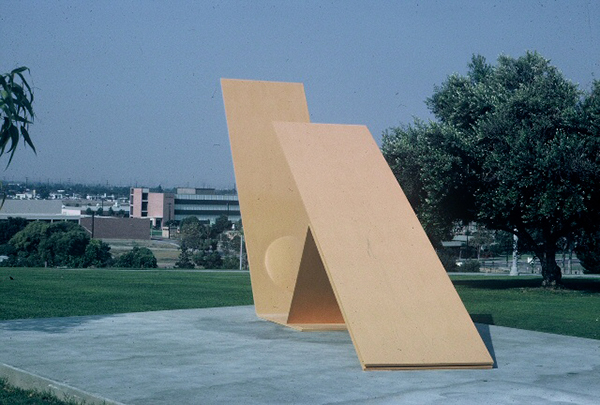
Duet (Homage to David Smith), 1965, Robert Murray. Photographed in 1965. Photo: Bayliss Glascock (Robert Snyder). Artwork: © Robert Murray. Reproduced courtesy Robert Murray and Special Collections and University Archives, California State University Long Beach, International Sculpture Symposium, 1965
Every Southern California city has its own piece of the art historical pie. Pomona cultivated conceptual artists. Ojai had ceramicists who broke the mold. Watts is home to one of the country’s most recognizable and mysterious art pieces.
Long Beach, too, has its own secret art history. The CSULB Outdoor Sculpture Collection of California State University, Long Beach (CSULB), was developed as part of a landmark 1965 symposium on the subject. The collection includes works by Piotr Kowalski, Claire Falkenstein, Robert Irwin, Kengiro Azuma, and Rita Letendre, among others. Now, as part of a collaboration between the Getty Conservation Institute and CSULB’s University Art Museum, much of this sculpture will be conserved for future generations of students and visitors to enjoy.
Experiments in Sculpture
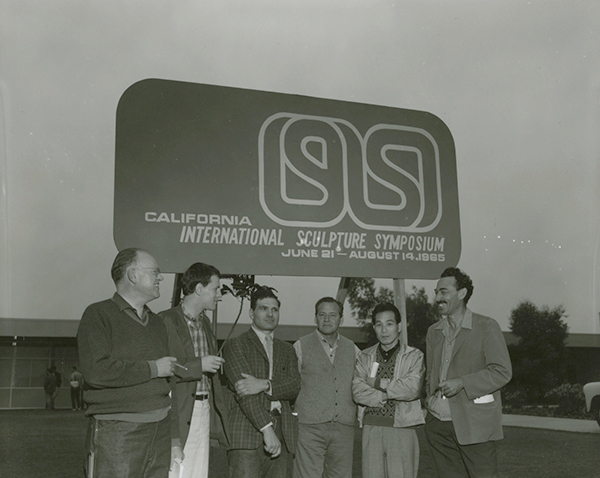
Some of the artists participating in the 1965 Sculpture Symposium. Left to right: Joop Beljon, Robert Murray, Piotr Kowalski, Gabriel Kohn, Kengiro Azuma, Kosso Eloul. Reproduced courtesy Special Collections and University Archives, California State University Long Beach, International Sculpture Symposium, 1965
The 1965 California International Sculpture Symposium was a significant experiment and major milestone in the collaboration of art and technology. The event, organized by CSULB sculpture professor Kenneth Glenn and artist Kosso Eloul, built partnerships with industry to create innovative sculptures using new industrial materials and new technologies. Internationally recognized artists worked with industrial partners such as Bethlehem Steel, Fellows and Stewart Shipyard, and North American Aviation in the creation of landmark works.
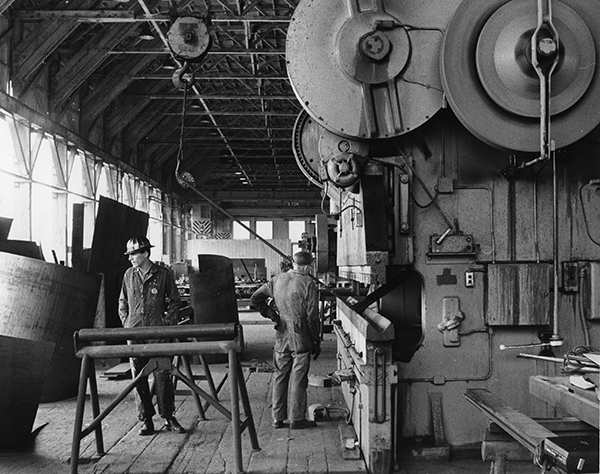
Fabrication of Robert Murray’s Duet (Homage to David Smith), 1965, at the Bethlehem Shipyards in San Pedro, California, 1965. Artwork © Robert Murray. Photo: Douglas Fox, reproduced courtesy Robert Murray and Special Collections and University Archives, California State University Long Beach, International Sculpture Symposium, 1965
Nine sculptures were realized on campus during the summer of 1965, and became the nucleus of the sculpture collection. Since that time, seventeen additional pieces have been acquired and are displayed throughout the campus.
Challenges of the Outdoors
Over the years, coastal weather has deteriorated he materials of their sculptures and faded their paint.
Take Robert Murray’s 1965 sculpture Duet (Homage to David Smith). Made of three sheets of thick painted steel, it was fabricated at the Bethlehem Steel shipyard in San Pedro, the only place in the area equipped to handle and form metal at the weight and dimensions Murray wanted. But only shortly after Duet was made, its color faded and the steel had to be repainted. This was the first of many repaintings, which over time led the sculpture to become darker and redder than the artist originally intended.
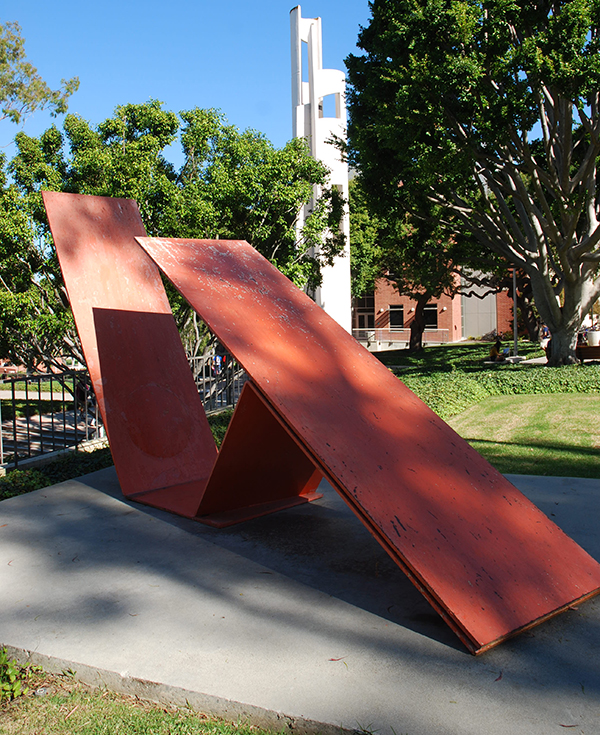
Duet (Homage to David Smith), 1965, Robert Murray. Photographed in 2012. Photo: Julia Langenbacher. Artwork © Robert Murray
As part of its Modern and Contemporary Art Research Initiative and Outdoor Sculpture project, the Getty Conservation Institute chose Duet as a case study for conservation. The case study will help to develop and implement conservation strategies for other works from the collection.
Conserving Duet
Although Robert Murray’s artistic practice has evolved over the years, color remains an important component of all his sculptures. Deciding on a conservation treatment for Duet meant identifying the different paints applied, retrieving and documenting the original color, and deciding whether to revert to the original hue.
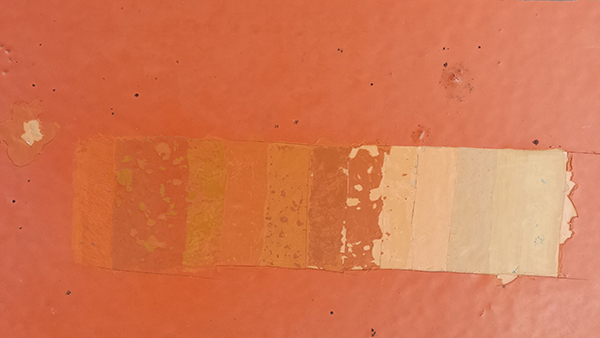
Various paint colors used through the years for Duet. Photo by Shefali Mistry. Courtesy University Art Museum, California State University, Long Beach
Project lead Rachel Rivenc, a scientist at the Conservation Institute, consulted frequently with Murray to enlist his help in identifying the original color. The project team, including the GCI, CSULB, and conservation firm Rosa Lowinger and Associates decided upon a color for the repainting and the most durable paint system. Once a color for the repainting was chosen (it’s very close to the original creamy yellow), Rosa Lowinger and Associates completed the conservation work on the sculpture with the participation of the Conservation Institute.

Painting in-process for Duet. Photo by Shefali Mistry. Courtesy University Art Museum, California State University, Long Beach
The artist was pleased. “Paint color is just as important as maintaining the structural integrity of sculpture,” Murray said of the project. “[It’s] all the more gratifying when a 50-year-old piece such as Duet is restored to its original appearance.”

Duet after repainting. Courtesy University Art Museum, California State University, Long Beach
Next Steps
As part of this collaboration and to celebrate the 50th anniversary of the first sculpture symposium, the conference Far-Sited: Creating and Conserving Art in Public Places will be held at CSULB on October 16, 17, and 18, 2015. It will bring together experts from all over the world to discuss new trends in public art, the use of new materials and technology, and the role of conservation for art in the public realm. The conference is held in partnership with the CSULB University Art Museum, the Getty Conservation Institute, and the Museum of Latin American Art, and will be free and open to the public.
To learn more, read about the case study project at CSULB, and take a virtual tour of its outdoor sculpture collection.

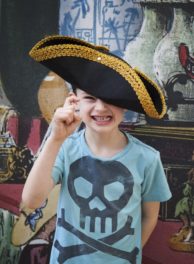
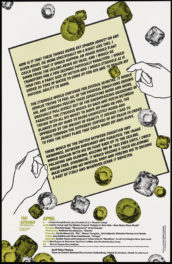

Comments on this post are now closed.
Trackbacks/Pingbacks